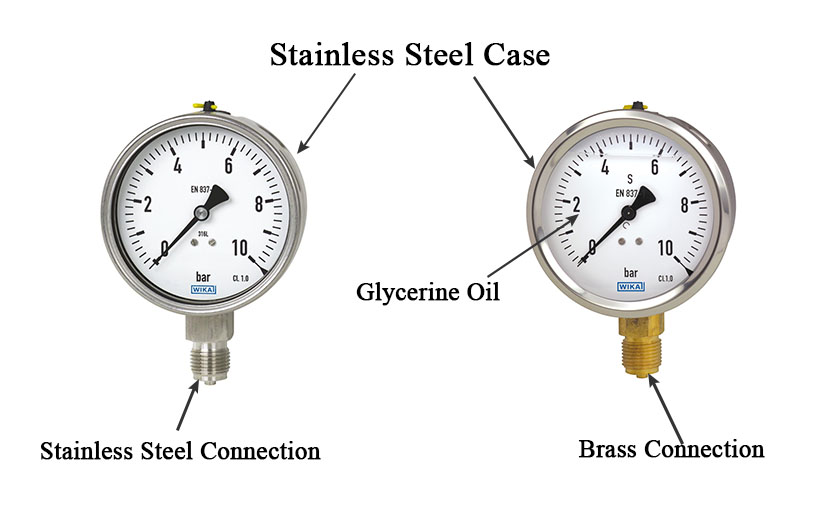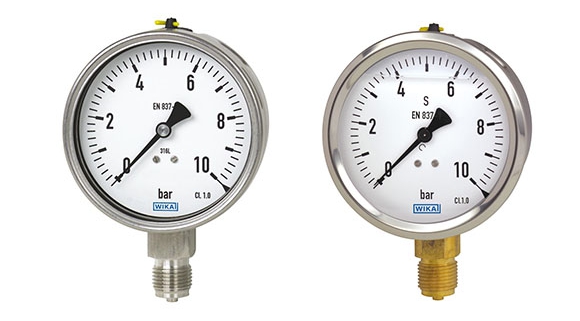Comparison of Model 232 and 213 WIKA Pressure Gauges
Comparison of Model 232 and 213 WIKA Pressure Gauges
What is a pressure gauge?
The pressure is generally defined as a force that acts uniformly over a specified area. When you press the button on a doorbell, for example, the pressure of your fingertip applies a physical force that triggers an electric actuation switch inside the doorbell, which then sends a signal to chime. In industrial applications, the force that is applied over an area is usually a gas or liquid, but it can also be a solid.
Eugene Bourdon (1808–1884) was a brilliant French watchmaker and engineer who invented the Bourdon gauge in 1849. This revolutionary new pressure measurement device enabled accurate measurement of much higher pressures than existing measurement devices. Bourdon designed the device for steam locomotive engines, but the notably more useful and robust pressure measurement device allowed engineers to develop a range of industrial machinery that operated at higher pressures. Besides its relative simplicity and accuracy, the Bourdon gauge can measure much higher pressures than the U-tube manometer pressure gauges used at the time. With the Bourdon gauge, engineers could now measure pressures in excess of 100,000 psi.
Comparison
Model 232.50 and 213.53 both measure the pressure with the Bordon-tube sensor and are slightly different from each other.
Material
232.50
- Case: Stainless steel
- Connection: Stainless Steel
213.53
- Case: Stainless steel
- Connection: Brass
Bourdon Tune and wetted part:
232.50
- Stainless steel
213.53
- Stainless steel
Liquid Filled
232.50
- Dry
213.53
- Glycerine Oil





Leave a Reply
Want to join the discussion?Feel free to contribute!